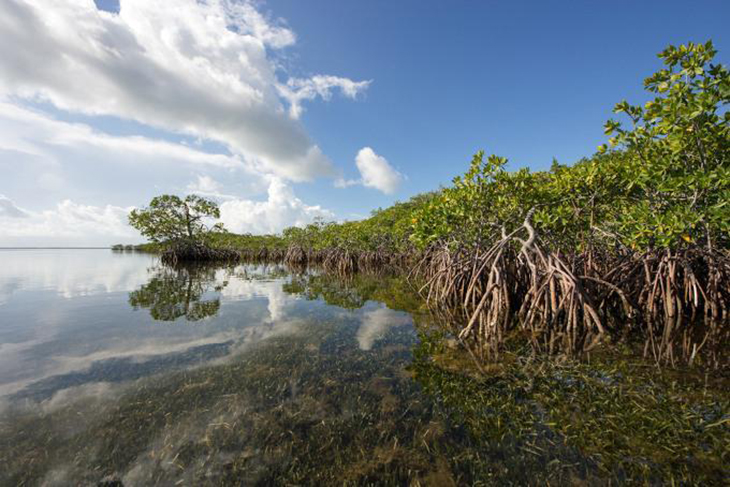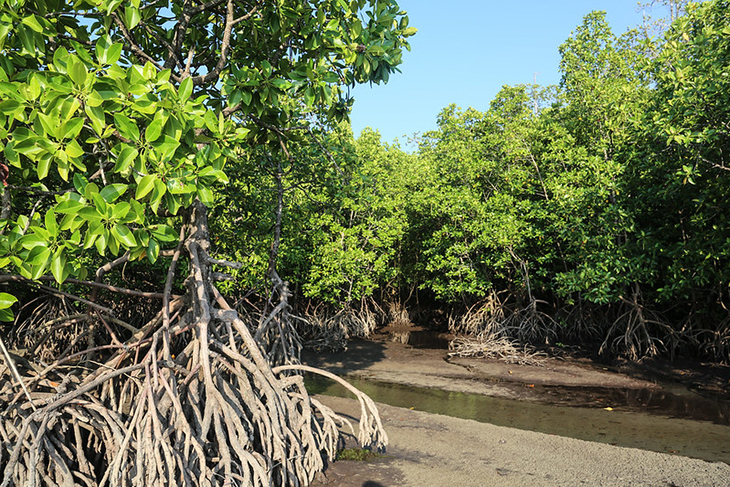
Mangroves are essential to the environment. These are also extremely unique and important for the safety of the planet. In the past few decades, these were depleting at a rate that was dangerous. If nothing would have changed, everyone would pay its deadly price. However, there is good news. With the 2022 State of the Mangrove report, a new picture story has come to light and the trend seems to be changing because people’s attitudes towards these have also changed. They have come to realize the crucial role they play in slowing down the impact of climate change.
The second annual report makes use of the brand new Global Mangrove Watch satellite maps. The pictures they’ve seen were in better detail when it came to analyzing this year’s mangrove situation.
Today, the world has seen that 42 percent of all mangrove forests are under some kind of protection. The updated maps have been able to calculate that 147,000 square-kilometers of the Earth’s surface (57,000 sq-miles) are now covered in mangroves. The researchers realized that the figures were higher than what they had assumed.
When they made a comparison to the last 14 years, the average loss rate between 2010 and 2022 went down by as much as 600 percent, or to merely 25 sq-miles per year (66 km2), or 0.04 percent.
The conditions for the coastal trees have also seen improvements. Aside from the dedicated efforts to reforest mangroves, the climate change policies implemented in all parts of the globe have gone down to a carbon-in carbon-out equation. This means that aquatic ecosystems such as mangroves have now become the most important ecosystem.
The report made had some goals. They wanted to provide a clear and simple cost benefit analysis to policy makers so that they are able to demonstrate the three key issues that face coastal populations. There was a mission of “halt loss, restore half, double protection,” and this was seen to be the most effective and doable strategy to date.

Halt Loss, Restore Half, Double Protection
Conservation outlet Mongabay reported on the summary. They provided a detailed account in the aftermath of the December 2004 Asian tsunami that killed a total 200,000 people in Sri Lanka. The researchers estimated that, per hectare for every household, mangroves, Sri Lanka had very few mangrove forests. They only gave a mere $14,500 in economic value. That was in part because these trees are able to absorb 70 to 90 percent of the kinetic energy expelled by a tsunami wave.
The State of the Mangrove 2022 has made an estimation and said that coastal communities near mangroves all over benefit from the protection it gives to the property and real estate. In fact, this equals to around $65 billion in storm and wave protection.
Because of the many benefits, the report recommends countries and partners to do the following three things: halt the loss of mangroves completely, restore half of what was gone since 1996 (which is around 1,580 sq-miles of restoration or 4,092 km2), and double the area surrounding the protected trees all over the world.
Aside from adding new maps, the report was also able to point out about 3,100 sq-miles of mangroves that can be restored (8,100 km2). They honed in on Southeast Asia and in countries such as Papua New Guinea, Indonesia, and others, where most of the world’s mangrove forests are located.
Why Mangroves are Crucial
There is an estimated 4.1 million working fishermen who are heavily dependent on mangroves all over the world. They use these forests as nurseries for all sea and some land creatures. The executive summary says that more than 600 billion shrimp and fish, and 100 billion bivalves and crustaceans live in mangrove forests early in their development.
Mangroves are vital to around 893,000 small scale fishers in just Indonesia. There is also an estimated 82 percent and 89 percent of those who live in Bangladesh and Nigeria fish predominantly in and around the mangrove areas.
But according to the powers-that-be and the educated ones, mangroves will most likely evolve to become the potential power storage for carbon. They based the findings on the chemical, geological, and biological reality of growing in waterlogged soil. They say that mangroves are estimated to hold up to four times the amount of carbon when compared to other forested ecosystems.
Mangrove soils all over store the equivalent of 22.86 gigatons of CO2. This is around 6.23 gigatons of soil carbon. The figures stated above are more than half of what the human population currently emits annually.
“The loss of even just 1% of remaining mangroves could lead to the emission of 0.23 gigatons of CO2 equivalent—equating to over 520 million barrels of oil, or the annual emissions of 49 million cars in the US,” the authors said in their study.”
This is why they strongly recommend the protection for an additional half of all mangrove forests and think that this is crucial to doing right now. The recommended restorations stated will be able to store another 1.27 gigatons of CO2 equivalent.
There are large restoration programs happening at the moment, and some of the largest right now include Senegalwhere in the regions of Casamance and Sine Saloum, 80 square kilometers have already been reforested. This totals to almost 80 million trees. The same is also happening in Indonesia where President Joko Widodo has attempted to reforest 6,000 square kilometers. China, on the other hand, has also been able to successfully restore 4 square kilometers of of mangrove forests in Zhanjian, Guangdong province, which is a total of 4 million trees.
What are your thoughts? Please comment below and share this news!
True Activist / Report a typo


